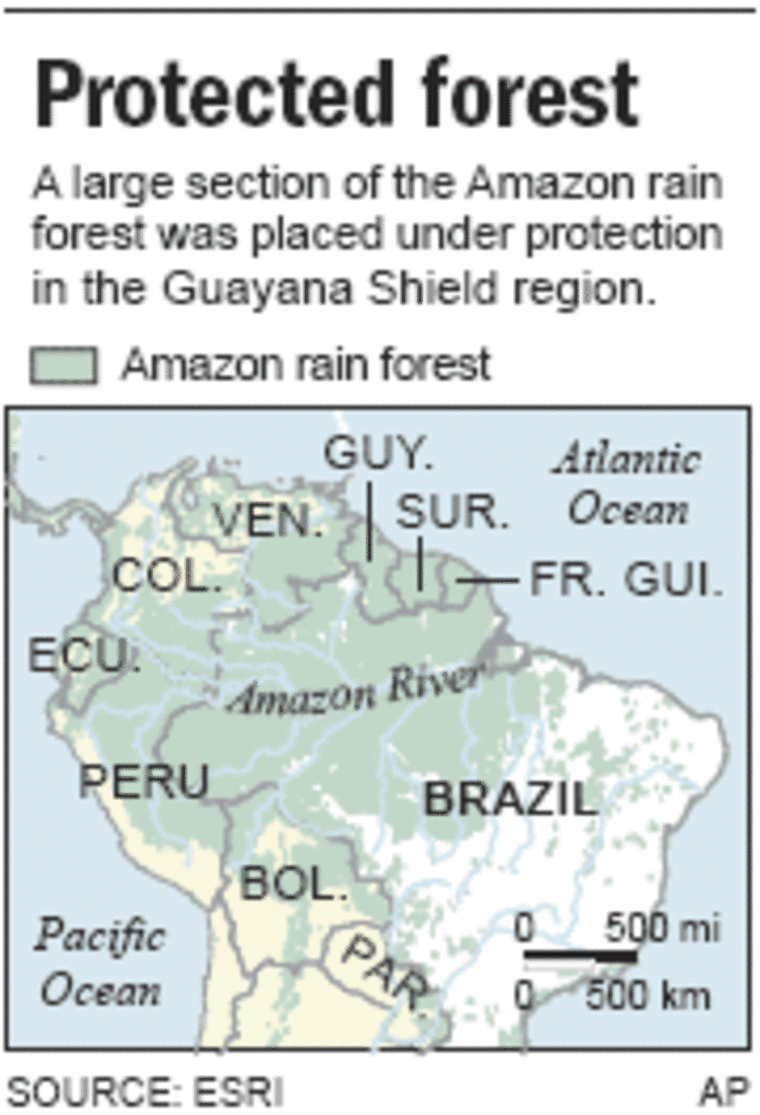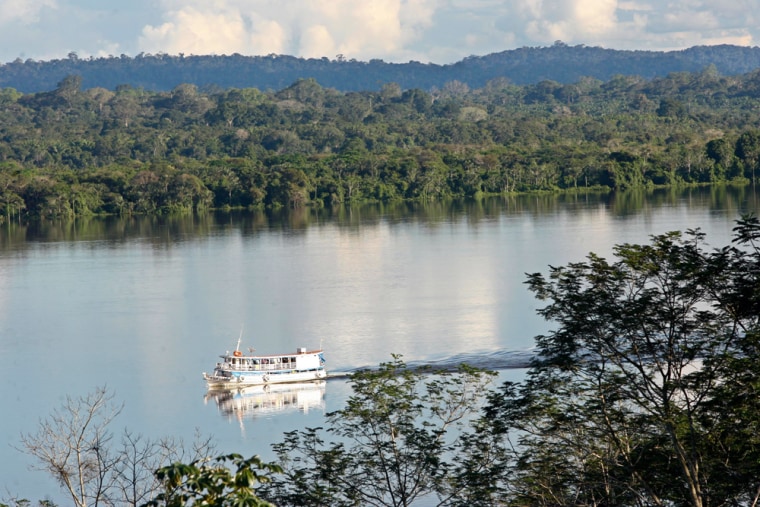A swath of Amazon rain forest the size of Alabama was placed under government protection Monday in a region infamous for violent conflicts among loggers, ranchers and environmentalists.
Known as the Guayana Shield, the 57,915-square-mile area contains more than 25 percent of the world’s remaining humid tropical forests and the largest remaining unpolluted fresh water reserves in the American tropics.
The protected areas will link to existing reserves to form a vast preservation corridor eventually stretching into neighboring Guyana, Suriname and French Guiana.
Conservation International put up $1 million to facilitate the expansion, which preserves much of the jungle’s largely untouched north. Still, it’s far from clear how much the new reserves will do to stall Amazon destruction, since most of the deforestation is taking place along the rain forest’s southern border.
“If any tropical rain forest on Earth remains intact a century from now, it will be this portion of northern Amazonia,” Conservation International President Russell Mittermeier said. “The region has more undisturbed rain forest than anywhere else.”
The Amazon region covers 60 percent of Brazil and 20 percent of its forest — 1.6 million square miles — already has been destroyed by development, logging and farming. Over the past four years, an area larger than South Carolina has been cut down.

The protections announced Monday are all the more surprising coming out of Para, a state twice the size of France long known for ruthlessly cutting down the rain forest and where ranchers often gun down those who try to stop it. The 2005 murder of American nun Dorothy Stang is only the most notorious killing of forest defenders in the largely lawless jungle frontier.
Stang, 73, of Dayton, Ohio was shot dead in a dispute over a piece of land she wanted to preserve and local ranchers wanted cut down to raise cattle.
Breaking ranchers' grip
The new protected areas will help break the power of ranchers who often own plots of land the size of small European nations and rule them as their own personal fiefdoms, said Para state environment secretary Raul Porto.
“Now there’s no need for the plantation-type estate, which was our biggest problem,” Porto said in a televised interview.
Two of the new protected areas, covering 22,239 square miles, would place the land completely off limits to the general public and only be accessible to researchers.
Together these two areas are believed to contain up to 54.1 percent of all bird, animal and plant species found in the Amazon, Conservation International said. They also are home to several endangered animal species, including the northern bearded saki monkey, jaguars, giant anteaters, the giant armadillo and the ariranha, or giant Amazon otter.
The remaining areas have been declared sustainable use protected areas, allowing local communities to manage the natural resources and permitting limited logging under strict management.
The creation of the new reserves places about 55.4 percent of Para state either under some form of government protection or on an Indian reservation.
“Together, the protected areas and indigenous lands of northern Para form one of the greatest biodiversity corridors of tropical forests in the planet,” Conservation International said.
